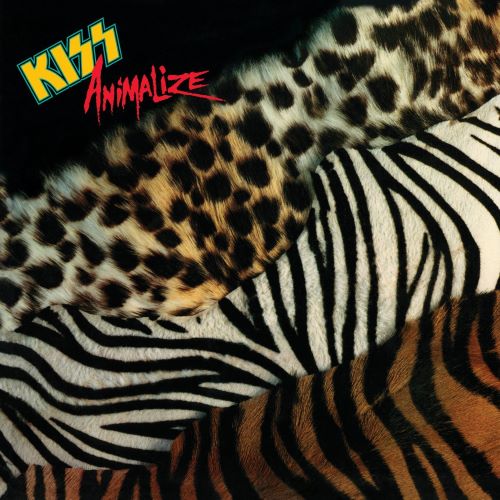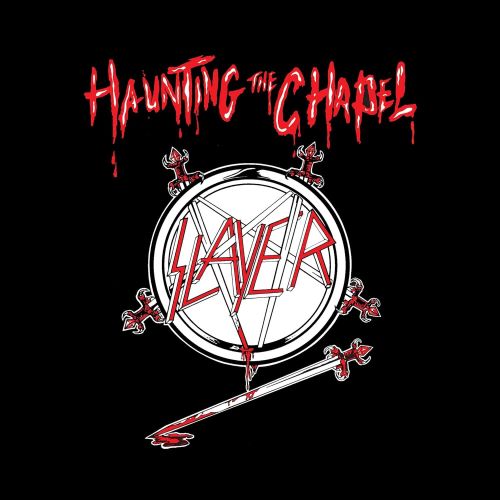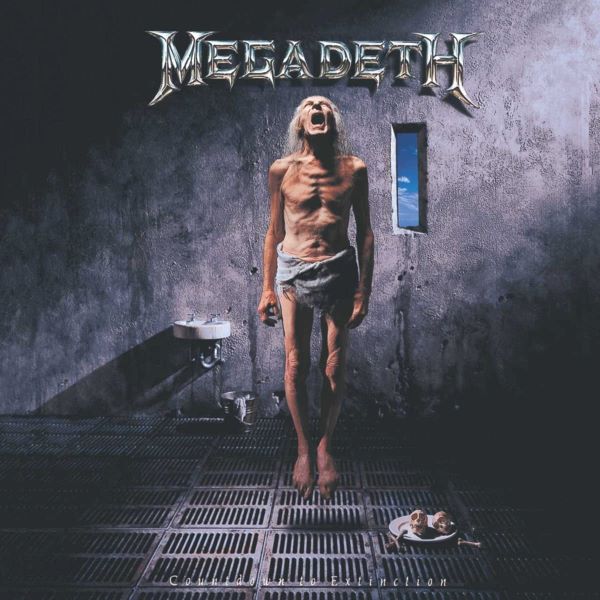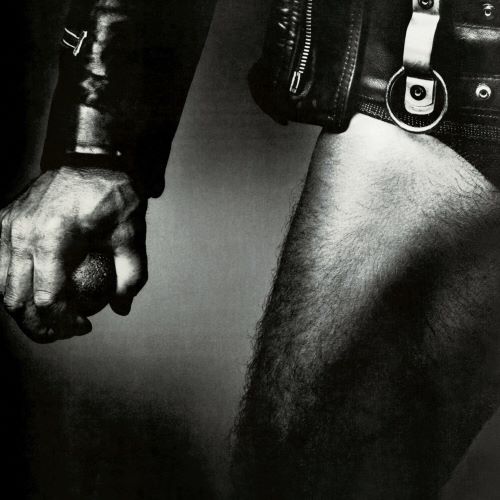I switched gears for this week after finding out this album just had its 32nd anniversary (or birthday, whichever) over the weekend. It is a mixed bag for sure and the record marked the end of an era for the group as they continued drifting away from the golden years of the 1980’s.
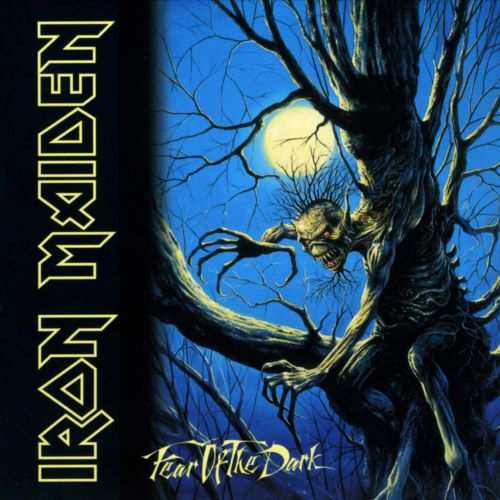
Iron Maiden – Fear Of The Dark
Released May 11, 1992 via EMI Records
Iron Maiden has entered the 1990’s with a retooled, stripped-down sound. The synth era of the late ’80’s was over and the band explored a meat and potatoes rock approach on No Prayer For The Dying. That album spawned the band’s only UK number one hit but is also widely held as one of the worst albums of the entire catalog. There was more variety on display here but the sounds and vibes weren’t terribly far off of this record’s predecessor.
The band’s line-up was the same as the album prior – Steve Harris as always on bass and band leading, Bruce Dickinson on vocals, Dave Murray and Janick Gers on guitar and Nicko McBrain on drums. Martin Birch helped Steve Harris produce, it marked Birch’s final involvement with Maiden as he would head into retirement. This was also Dickinson’s final album with the group until 2000, Bruce was off to his solo career about a year later.
This also marks the end of the line for Derek Riggs album covers – this one was done by Melyvn Grant, who is now the second-most credited artist for Maiden covers. And this one was a pretty good job, very nice and different depiction of Eddie.
This is one loaded album – it is 12 tracks at 57:58, marking Maiden’s first double album. As I recall from my Iron Maiden album ranking, this one did not place very well at all, landing at number 14 on my list. As I said then, this album has a lot of variety but also a lot of varied results, so let’s jump in and see what’s what.
Be Quick Or Be Dead
The opener also served as the lead single. It is a very fast and aggressive song, something a bit over the bar for Maiden. The intensity helps drive home the song’s message about how screwed up corporations and governments are, something that has only gotten worse 32 years on. This one is really good and certainly among the album’s keepers. Grade: B
From Here To Eternity
Another single and the conclusion of the long-running Charlotte saga. It’s a muscular hard rock affair that is fairly basic but I enjoy what it has on offer. It won’t set the world on fire but I don’t have an issue listening to it. Grade: C+
Afraid To Shoot Strangers
On now to a song that fits the Iron Maiden identity full and true. This haunting track starts quietly then builds into explosive action later and it features the movements and thoughtfulness typically expected from Maiden. The song examines the first Gulf War from the eyes of a young soldier who is sent to kill – it’s a new take on the classic “government starts the war and poor people fight it” trope found in music of all stripes. It could be said this is what Maiden used to sound like before the 1990’s shift, but I think it’s more accurate to say that this is what Maiden would sound like in their second “golden” era in the coming reunion years. An absolute whale of a song, very well done. Grade: A
Fear Is The Key
Up next is a song lyrically inspired by the death of Freddy Mercury to AIDS and the concept how how no one really “gave a shit” about the disease until celebrities started dying to it. The issues around HIV and AIDS were a massive shitshow in the 1980’s and early ’90’s for sure.
This song has some good hooks and riffs though it does feel a bit odd in structure. And the song’s last few minutes really throw a wrench into the works – I don’t know what’s going on but it reminds me of Spinal Tap playing Jazz Odyssey. Hilarious in the movie, not so hot on record. Overall this one doesn’t command my attention much, bit of a roller coaster. Grade: D+
Childhood’s End
Another bit of a fierce pounder here and a song that very much offers the sound of Maiden to come for the rest of the decade. Interesting use of drums here and everything comes off pretty sharp and well done. It’s a look at how the whims of politicians lead to children around the world caught up in war, famine and other shitty situations. While this song is one of the album’s secondary tracks, it does a pretty good job. Grade: B
Wasting Love
If you had “Iron Maiden will release a power ballad in 1992” on your bingo card way back when, well, you probably cashed in. I don’t know why Maiden would do a ballad or why they’d release one in 1992 when the ballad was persona non grata in the alt-music world. But none of that is really important because the song is pretty damn good. It’s a sad look at someone trying to end their loneliness through casual hook-ups and only finding more loneliness at the end of it all. This one was a curveball but curveballs are valid pitches to throw. Grade: B+
The Fugitive
Here’s one inspired by the old TV show, there were since movie remakes and whatever. Not a bad song but not radically interesting either, easy to listen to but also easy to forget. Grade: C
Chains Of Misery
It’s a song about the “devil on your shoulder” concept. It’s an outright sleazy glam track with gang vocals and the whole nine yards. It’s not a terrible song per se but it’s so out of place on an Iron Maiden record. This song is another curveball but the pitch doesn’t really land. It’s musically just good enough to not be a total trash affair. Grade: C-
The Apparition
Whether or not you like this song hinges on what you think of Bruce’s climbing vocals through the verses here. If you like them then you probably think this ghost tale is at least ok. I personally don’t like them much and it’s all the song does so I think it’s awful. One way to make a double album is to not make it and cut certain songs that don’t work – this would be one of them. Grade: D
Judas Be My Guide
This one’s about how everyone is basically “for sale,” in that everyone has a price and will eventually sell out to the high bidder. It’s of course tied to the biblical story of Judas, the betrayer of Jesus. It’s also an absolutely fantastic song. It’s short and a quick rock track but it works on every level. The Iron Maiden “butt rock” era could have been something else if more of the songs were like this. I and many others consider this to be one of the most underrated tracks of the Maiden catalog, this one is a true hidden gem. Grade: A+
Weekend Warrior
The Maiden butt rock era might have worked with more songs like the last one, unfortunately there were also tracks like this. It’s a song about football/soccer hooliganism, something Steve Harris is quite familiar with as a West Ham United fan. Whatever the topic, I don’t know what the hell is going on with this song – it’s so basic that it hurts and it goes nowhere. It’s very close to the worst Maiden song I’ve ever heard. Grade: F
Fear Of The Dark
The title track and album closer offers a very simple premise – it’s about being afraid of the dark, being paranoid about what might lurk in the shadows and corners that light doesn’t penetrate. It’s also the Maiden song from the 1990’s that has endured and earned the title of classic.
This song is a total Iron Maiden track through and through, with running riffs and quiet/loud dynamics and about anything you’d want out of a Maiden song. After slogging through an uneven album that has some massive question marks in creative choices, this song nails everything about Iron Maiden. Grade: A+
Although this era of Iron Maiden is lightly regarded, Fear Of The Dark was a bit of a success as the group pressed on in the wilderness of the 1990’s. The album charted at 12 in the US, 1 in the UK and claimed many other top 10 positions. It has been certified gold in 5 countries and has a platinum cert from Italy. It was, as of 2008, at least in the ballpark of a US gold certification as well, no known updates on that.
So what happens when you have a few really awesome songs, a handful of average tracks, and a few real stinkers? I guess, in the end things kind of average out and I can consider this an average album. It’s not average in that all of the songs are consistent and ok – it’s average because it’s great in a few spots and awful in a few others. But average is average when all is said and done.
Album Grade: C
This would be the end of an era for Iron Maiden – they would spend the balance of the decade with a new singer and song direction before restoring the glory years line-up in 1999 and being at the forefront of the new interest in traditional metal in the 2000’s. It is easy to dismiss these albums as a lost period, but there are songs certainly worth visiting on this one.
For an explanation of the grading scale, head here.
For questions, comments or concerns, either use the comment form below or head to my contact page.
For more of what I’ve posted about Iron Maiden, check out the band index.

